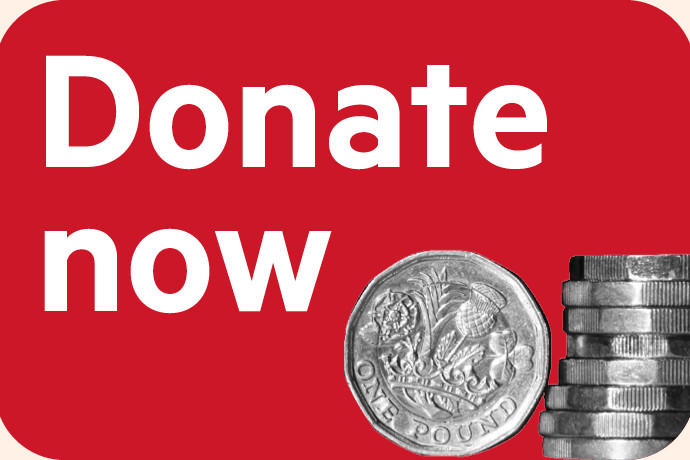Vanishing cash means ‘digital literacy’ is vital


Roula Khalaf, Editor of the FT, selects her favourite stories in this weekly newsletter.
This article is the latest part of the FT’s Financial Literacy and Inclusion Campaign
Forget pounds, dollars or even bitcoin. There’s only one currency that my two-year-old niece currently understands — and it’s pain aux raisins.
Bribery is a key feature of “Auntie Claer care”. If she’s been good, she gets a treat at the coffee shop on our way home (her favourite part is unravelling the pastry and picking out all the raisins). And another important part of this occasional ritual? She likes to pay for it herself.
Even at her tender age, my niece has worked out that tapping contactless cards on payment terminals is a medium of exchange. Naturally, she wants to be the one to tap my card.
I am all for giving children early exposure to money and payments, but what worries me is the invisibility of digital transactions versus the physicality of notes and coins. Do children realise that actual money is being spent, or think this “magic card” simply makes everything possible?
FT Flic

This article is part of a series of pieces written for the new FT Flic charity which will develop educational programmes to boost the financial literacy of those most in need.
Financial literacy education gives young people the foundations for future prosperity — and can help economically disadvantaged people out of deprivation. Join the FT Flic campaign to promote financial literacy in the UK and around the world
Tapping away, it’s easy for adults to forget we are spending money. I’m ashamed to admit I couldn’t tell you exactly how much a single pain aux raisins costs. I know it’s around £2, but I always buy a coffee too — and I rarely ask for receipts for digital transactions.
Even if I gave my niece some coins to help her learn the value of money, there’s another problem. Since Covid-19, plenty of businesses have gone cashless, and I buy nearly everything online.
Likewise, the piggy banks I bought for her five-year-old twin brothers are gathering dust on the shelf. When my brother and I were their age, we hoarded coins to buy penny sweets in the local post office. Today, there are very few places (in central London, at least) where children can spend small amounts of their own money.
All of this has got me thinking about financial literacy and the role that digital literacy plays within this.
The future of finance is clearly digital — but younger children cannot learn how to manage the dangers or opportunities if they don’t have access to digital tools.
You have to be at least 11 years old to open a current account at the great majority of UK banks. Some restrict contactless cards and online banking to over-13s or over-16s.
When you consider all the other things much younger children are already doing online by then, these age limits seem increasingly out of step.

Yet Stuart Haire, head of retail banking and wealth management for HSBC UK, recently told me he gets way more requests from parents asking to disable the contactless feature on their child’s card rather than lower the age limit.
It’s understandable that parents want oversight. Online banking hands young people the keys to a digital kingdom they may simply not be prepared for. Equally, young people need a “safe space” in which to try it out.
When I visited a school in Manchester this summer, an alarmingly high number of 14-year-olds said they had received requests to be a “money mule” via social media platforms.
They also knew an awful lot about crypto — as FT columnist-turned-teacher Lucy Kellaway has also found with her students — not to mention gambling and “buy now pay later”, even though you have to be over 18 (legally) to do any of these.
So how do we prepare them? If parents are willing and able to pay, there are an array of services offering apps, and pre-paid contactless cards for children as young as six.
“This is the way children are going to have to use money as they move into adulthood,” says Louise Hill, co-founder of GoHenry, by far the biggest “pocket money app” in the UK, with more than 1.5m accounts.
For £2.99 per month, parents can load a monthly allowance on to their child’s contactless card, see real-time notifications about what’s been spent, how much is left, and even restrict where they can spend the money. (This could prevent a future run on pains aux raisins in the Tooting area.)
“Children need to be able to operate confidently in today’s increasingly cashless society,” she says. “If you’re not enabling these skills at an early age, the risk is they get launched into the adult world of easy credit and easy access to funds, and end up in a bad place.”
Linking adult credit cards to children’s online gaming accounts is one area where many parents have come a cropper, as children don’t know (or don’t care) that all those in-app purchases will run up big bills.
Another important aspect of digital literacy is being able to earn money online. As a judge of the National Entrepreneur of the Year awards, Hill has been amazed at how teens make money with side hustles, using apps such as Etsy, Vinted and Depop to sell their wares. However, access to digital payment platforms is usually restricted to over-18s, meaning children have to piggyback on their parents’ accounts, or risk accounts being frozen if providers find out they are under 18.
“We are talking to a number of these organisations about whether we could be more tightly linked,” she says.
Mainstream banks are also starting to get into this space. Starling offers a “Starling Kite” app and card for six to 16-year-olds, which is linked to a parental account, has full protection with the Financial Services Compensation Scheme and costs £2 per month.
NatWest recently acquired the fintech company Rooster Money, which offers a similar service for £24.99 a year, and will soon be available via the NatWest app.
“The 7-11 age group is really crucial from a financial education perspective, but also for developing their own independence around cash,” says Alison Rose, the bank’s chief executive.
Digital apps commonly feature interactive quizzes, modules and games to make learning about money engaging and fun — perfect for an audience glued to their smartphones. If young people can build this capability digitally, the chances are they’ll be better prepared for future financial challenges that life may throw at them.
While the cost of apps, smart devices and broadband is not something every family can afford, these are future financial lessons that every child needs to be taught.
This is where the FT’s Financial Literacy and Inclusion Campaign comes in. I’m a trustee of the FT-backed charity, and one of our key missions is to ensure financial literacy is firmly embedded within the school curriculum so every child is prepared for the digital financial world.
FT Flic is working closely with schools and other charities to train teachers, and produce engaging teaching materials for the classroom, and social media. You can read more at ftflic.com and make an online donation if you’d like to support this vital work.
Improving financial education is one of the best investments we can make for our children’s future.
Claer Barrett is the FT’s consumer editor: claer.barrett@ft.com; Twitter @Claerb; Instagram @Claerb
Weekly newsletter
For the latest news and views on fintech from the FT’s network of correspondents around the world, sign up to our weekly newsletter #fintechFT

Comments